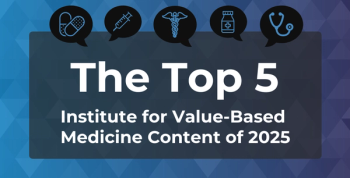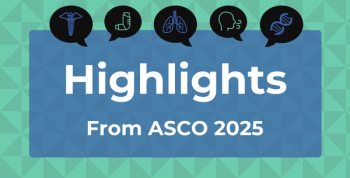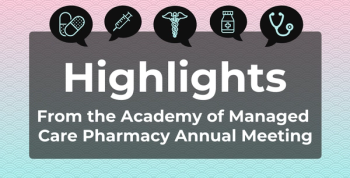
Secondhand Smoke and Screen Time: Prevention Insights at ACC
Coverage from the 67th Scientific Session of the American College of Cardiology.
Interventions to prevent cardiovascular (CV) disease and diabetes, including those that target youth, were the focus of Saturday’s poster session, “Blood Pressure, Cigarette Smoking and Exercise: Key in the ABCDEs of Comprehensive Cardiovascular Prevention” at the 67th Scientific Session of the American College of Cardiology in Orlando, Florida.
ABCDE stands for antiplatelet therapy, blood pressure control, cholesterol-lowering therapy and cigarette cessation, diet modification and diabetes prevention and management, and exercise. With antiplatelet therapy the focus of other sessions, noteworthy posters at the sessions included:
Adolescent hypertension. The first of 2 posters from the Michigan Project Healthy Schools focused found that high blood pressure (BP) in younger teens is associated with worse physiological markers, notably higher body mass index (BMI). Data from middle school students was gathered between 2004-2016. When comparing those with high systolic BP (>120 mmHg) vs those without, BMI was a significant difference (24.1 kg/m2 vs 19.0 kg/m2), as was resting (84 vs 81) and recovery heart rate (112 vs 105), and triglyceride (112 vs 85) and total cholesterol levels (159 vs 155).1
Women and smoking cessation. Even if women smoke less overall, they apparently have a harder time quitting smoking, and that can affect outcomes when patients undergo elective percutaneous coronary intervention (PCI) a non-surgical procedure to treat narrowing of the arteries for coronary arteries disease. Of 6482 men and 3980 woman who underwent PCI, 42.5% men smoked and 10.4% of women at baseline. Quitting smoking dramatically improves outcomes, and 1321 men (48%) and 126 women (30.6%) quit smoking, but 146 men (11.1%) and 25 women (19.8%) relapsed. Compared with those who never smoke, current smoking was associated with risk of death in both women (HR 3.32) and men (HR 1.74), but smoking cessation was still an independent risk factor of death in women (HR 2.26) and not in men (HR 1.29).2
Secondhand smoke risks. Secondhand smoke is a known risk, but what about older adults who live in community settings with smokers? Amiya Ahmed and his co-authors at the University of Maryland examined data in the National Heart, Lung and Blood Institute Community Health Service public use data for adults at least 65 years of age, and found 5604 adults who had detailed data on smoking. They limited their analysis to 2588 never smokers, and found 243 who were exposed to secondhand smoke. While the average age of participants was 74 years, those exposed were more likely to be slightly younger (72 years), and African American. The analysis found that exposure to secondhand smoke was associated with a slightly higher risk of all-cause mortality but not a higher risk of CV mortality or heart failure.3
Screen time trending down? The second poster from the Michigan Project Healthy Schools captured an interesting trend: it captured baseline data from sixth grade students before they entered a healthcare intervention. But as the data were entered over 4 years, it turned out students were recording less screen time and more physical activity over the period, in contrast with perception.
Results were based on self-reported questionnaires. Of 11,012 eligible students, 3277 (29.8%) were excluded for reporting >9 hours/day of total screen time. Only 1087 (14.1%) students reported high mobile device usage; they were more likely to be female and from lower socioeconomic strata.
Presenter Jeffrey Lee told The American Journal of Managed Care® there’s good news and bad news in the data. “Over the 4 years, screen time has gone down—particularly for TV and video game screen time,” Lee said. During this same period, time spent exercising has gone up.
Overall, Lee said, this could suggest that families were becoming more health conscious—parents of sixth graders can still exert control over screen time. Lee said there are many more products to track activity and encourage exercise, such as Fitbits. But the data also show a disparity between middle- and upper-income students and those from lower-income families, Lee noted.4
References
- Bernardo S, Krailman R, Montgomery D, et al. Cardiovascular risk factors associated with adolescent hypertension. Presented at the American College of Cardiology 67th Scientific Session, Orlando, Florida, March 10, 2018. Poster 1169-403.
- Yang L, Zhou Y. Differential impact of smoking cessation on prognosis in women compared with men with coronary artery disease undergoing percutaneous coronary intervention. Presented at the American College of Cardiology 67th Scientific Session, Orlando, Florida, March 10, 2018. Poster 1169-407.
- Ahmed A, Kanonidis E, Tsimploulis A, et al. Secondhand smoke is linked to higher risk of noncardiovascular mortality but not of cardiovascular mortality in community-dwelling older adults-findings from Cardiovascular Health Study (CHS). Presented at the American College of Cardiology 67th Scientific Session, Orlando, Florida, March 10, 2018. Poster 1169-408.
- Lee J, Krailman R, Montgomery D, et al. Trends in mobile device usage, physical activity, and sedentary screen time in Project Heathy Schools students. Presented at the American College of Cardiology 67th Scientific Session, Orlando, Florida, March 10, 2018. Poster 1169-416.
Newsletter
Stay ahead of policy, cost, and value—subscribe to AJMC for expert insights at the intersection of clinical care and health economics.







































